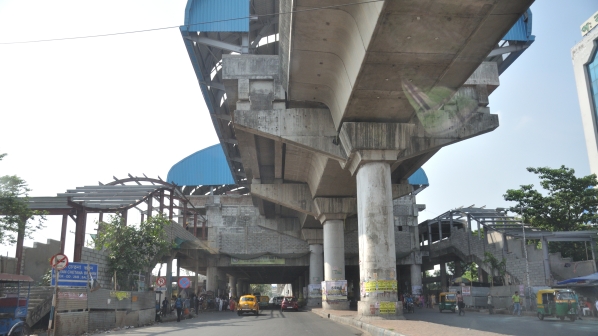The Indian cabinet sanctioned a revised project cost of Rs 85.8bn ($US 1.15bn) earlier this month, ending an impasse between the government and the state government of West Bengal over escalating costs. The Japanese International Cooperation Agency (Jica), which is partially funding the project, had also been reluctant to agree to alignment changes proposed by the West Bengal government. Land acquisition issues and campaigning by environmental and heritage conservation activists also contributed to the delays.
The project was envisaged as long ago as 1971, finally securing approved in 2008 with an estimated cost of Rs 48.7bn. The 7km Phase 1 of the 16.6km line was commissioned in 2018 and opened in February 2020.
Following the approval of the revised costs, Jica’s contribution will increase from Rs 22.5bn to Rs 41.6bn.
“Hurdles have been overcome,” says Mr Vishwanath Diwanji, managing director, civil, at Kolkata Metro Rail Corporation (KMRCL). “Alignment work on the 9.6km stretch of Phase 2 has almost been completed, with just 800m of single-track line remaining. We are confident of meeting the project completion deadline of December 2021.”
The standard-gauge line will have a 10.8km underground section, a 5.8km elevated section, and 12 stations. The line will have an operating speed of 80km/h, using 2.88m-wide six-car trains with capacity for 2068 passengers.
The line will run through the heart of the city, connecting two of the world’s busiest stations at Howrah and Sealdah, with KMRCL estimating it will carry 2.4 million passengers a day.
In 2010, current West Bengal chief minister, Ms Mamata Banerjee, who was national railways minister at the time, ordered the central government to entirely fund the line. This decision lead to complex and time-consuming administrative and financial readjustments.
When Banerjee was appointed West Bengal chief minister in 2011, she insisted on changing the alignment to include an interchange station at Esplanade instead of Central Station, requiring fresh soil and sample surveys. Two months before Phase 1 was inaugurated in October 2018, several buildings collapsed due to tunnelling activities in the heavily populated Bowbazar market area.
For detailed data on metro projects around the world, subscribe to IRJ Pro.

